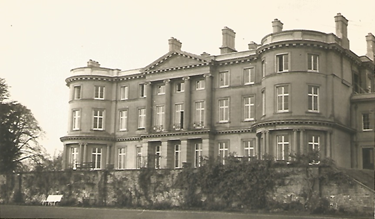Jeremy Knight remembers being 'Out with the Cambrians' but we remember him being 'Out with the Monmouthshire Antiquarians' as well
Jeremy Knight remembers being 'Out with the Cambrians' but we remember him being 'Out with the Monmouthshire Antiquarians' as well. Jeremy Knight has been an important figure in so many local historical societies and has given talks and led tours of many historical sites for numerous organisations including The Monmouthshire Antiquarian Association (MAA).
 |
| St Peter's Churchyard Blaenavon |
 |
| Blaenavon Ironworks |
‘OUT WITH THE CAMBRIANS
THE SUMMER MEETING'
Jermy Knight
‘I think it’s time you joined the Cambrians’. These words from the devoted Cambrian Cefni Barnett, Director of Newport Museum , were the start of a long and enjoyable journey over many years. If Osbert Sitwell was ‘educated in the holidays from Eton’, someone involved with Welsh field monuments for much of his life can claim to received an education in Cambrians coaches at their summer meetings. My title is taken from Evelyn Lewes’s book of 1934. Her first Cambrians meeting was in 1906. The ‘bearded, spectacled long-coated, clerical-hatted elderly and most learned looking persons’ were at first glance intimidating, but she soon found plenty of friendly younger faces. She was relieved when after a few years, the horse drawn wagonettes, whose discomforts she describes, were replaced by ‘comfortable motor charabancs’
Our first Summer Meeting was at Aberystwyth in 1847. Apart from visits to such Marcher outposts as Ludlow or Hereford, our ventures outside Wales were to the Isle of Man ( 1865, 1929); Brittany ( 1889, 1924) Ireland ( Kerry 1891, Galway 1934); or western Scotland (1899). In Kerry, one of the smaller vessels of the Royal Navy was put at our disposal to visit some monastic remains on an island. The Captain refused to have women aboard. Faced with formidably indignant Cambrian ladies on the quayside, he backed down. At this time, private cars were rare. In the 1920s even Lord Peter Wimsey had to borrow a friend’s when one was needed. Travel to our meetings depended on the rail network. When Sir John Rhys published a newly discovered inscription, he often gave the nearest railway station, much as we might give a grid reference.
After the war, the Cambrians flourished . Coaches were divided between Parties A (more strenuous archaeology), B (less strenuous houses etc) and, briefly, C (industrial archaeology). People one knew only from their publications became good friends, through the site visits, conversations on coaches and often by sitting late into the night, glasses in hand, as Peter Grimes reminisced about Sutton Hoo or J.D.K. Lloyd told stories of Montgomery.
David Cathcart King ‘King of the castles’ survived an active war unscathed, winning a Military Cross in the process, only to lose a leg in a road accident on V.E. Night. He brought his model siege engines to summer meetings. A crossbow bolt came through my open window one morning. I looked out ‘Good Morning Jeremy’. Once, some younger Cambrians found their distinguished elders barricaded each end of the hall, bombarding each other with the leftovers from an earlier reception, through miniature trebuchets. King produced mock medieval documents from the University of Shepton Mallet (then a military prison) featuring Cambrians. Lily Chitty, the prehistorian, travelled with an array of bags and coats carried by younger Cambrians ‘The youths who carry the Abbess of Pontesbury’s baggage’. Lal’s encycopaedic knowledge was the dread of museum curators on Cambrian visits, demanding to see some obscure prehistoric find.
I still associate many places with Cambrian visits- a youthful Nancy Edwards making her Cambrian debut at Maen Achwyfan or Josiah Jones Davies , already a sick man, waving us off from his church at Llywel, with its collection of early inscribed stones, to which he had made a notable addition.
See https://cambrians.org.uk/about-us/ which tells you more about the origins of the society.
 |
| The Cambrians in Pembrokeshire |




